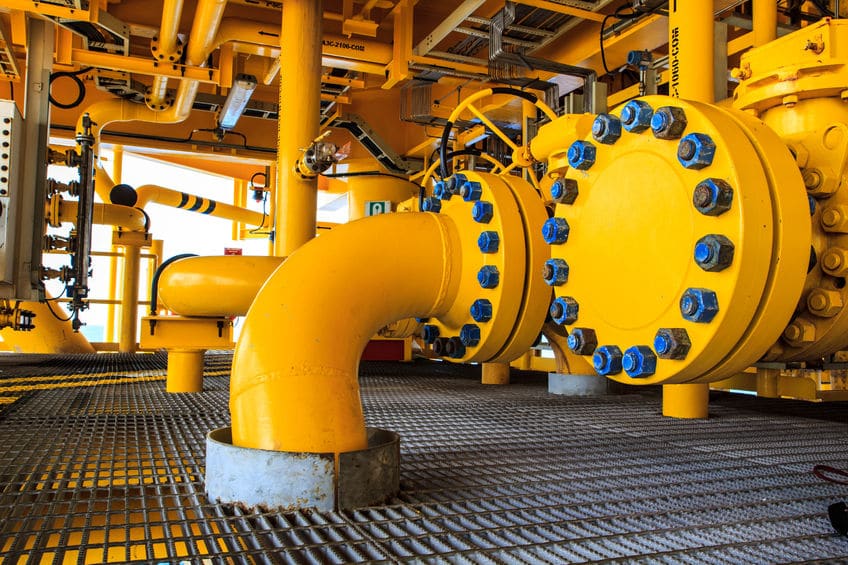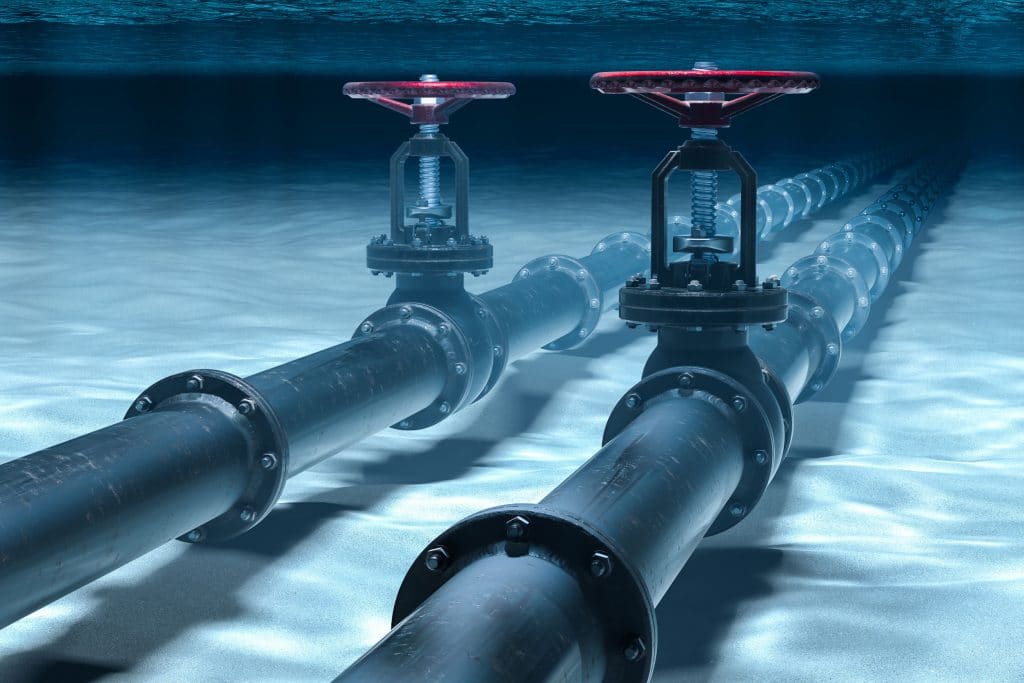Overview
- The complete systemconsisting of flange, bolt and gasket is considered.
- Use of tightness classes to ensure tightness of the system after installation and all subsequent conditions.
- The gasket characteristics are used according to EN 13555.
- The maximum allowable surface pressures at room and operating temperature, the modulus of elasticity of the gasket and the seating value are taken into account.
- The gasket properties are characterised by the minimum seating pressure for the corresponding tightness class L in the assembly as well as in the operating condition.
- Additional parameters such as the friction factor between the gasket and the flange face are used to determine permissible shear forces or torsional moments.
 40988643-offshore industry oil and gas production petroleum pipeline.
40988643-offshore industry oil and gas production petroleum pipeline.
Based on the strength characteristics of the flange and bolt as well as the gasket characteristics, a complete verification of the flange connection can thus be carried out.
The coefficient of thermal expansion of the flange and screw materials is also taken into account. This is crucial when using a combination of ferritic and austenitic materials. Without consideration, an overload of the connection or leakage could occur.
The calculation method according to EN 1591-1 enables the exact determination of the minimum and maximum tightening torque during assembly. The iterative calculation process allows the limits to be determined precisely.
This makes it possible to design a flange connection in a material-saving and thus optimal way. This method therefore offers decisive advantages over flange calculations according to ASME or the AD 2000 regulations. In many cases, the AD 2000 Rules already refer to the application of the flange calculation according to EN 1591-1. The previous method of calculation according to chapters B7 and B8 of the AD 2000 Rules is thus increasingly receding into the background.
In recent years, we at Lauterbach Verfahrenstechnik GmbH have carried out a large number of projects focusing on flange connections.
The securing of the flange connection under deep-sea conditions should be emphasised. Starting with the installation of the flange connection above water on the ship, lowering of the pipeline to the seabed and commissioning of the pipeline, the flange connection had to be verified for all load cases. For this purpose, a complex FEM calculation of the flange connection with modelling of the sealing behaviour as well as an analytical calculation according to EN 1591-1 were carried out in parallel. It has been shown that the results of the FEM calculation agree very well with the results of EN 1591-1. However, the decisive advantage here lies in the calculation according to EN 1591-1, as this only took afraction of the working time of an FEM calculation.
 Pipeline lying on ocean bottom underwater. 3D rendering
Pipeline lying on ocean bottom underwater. 3D rendering
Based on these empirical values, we are convinced of the efficiency of the flange calculation according to EN 1591-1.
see also:
Dieser Beitrag ist auch verfügbar auf:
 Deutsch (German)
Deutsch (German)